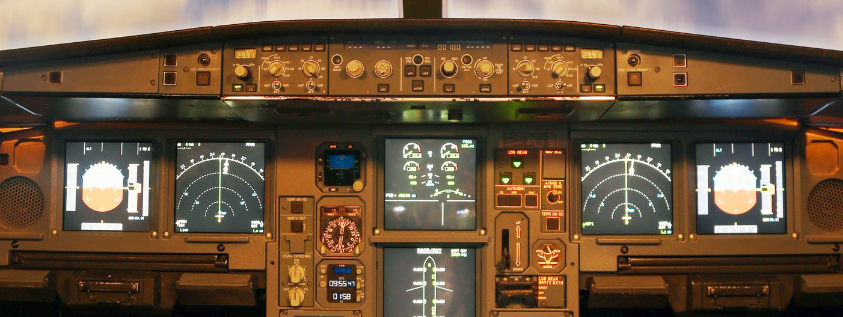There are two ways of flying an aircraft: visual flight – direct and intuitive – and instrumental flight, which is much more technical.
In visual flight conditions, the terrain, cities, roads, etc… give us clear indications of our position. This is the mode practised in Sport Aviation, and in fact with good visibility and at low altitude, a simple road map could be enough to guide us safely. But what happens when the flight takes place in conditions of low or no visibility, over clouds, at night, over the ocean…? In these cases, instrument flight must be used. For this, both the aircraft and the pilot must be qualified.
Como vemos, dependiendo de las condiciones meteorológicas en las que se desarrolla el vuelo se puede clasificar en dos regulaciones:
- Visual Flight Rules (VFR): This regulation covers flights that can operate in visual meteorological conditions. (VMC – Visual Meteorological Conditions
- Instrumental Flight Rules (IFR): This regulation covers flights operating under instrument conditions. This is the way in which commercial flights are conducted, as they require reliable guidance elements, regardless of whether the flight is over the sea or at night. On the other hand, commercial flights often take place at altitudes often in excess of 10,000 metres, so that even in clear weather it is difficult to be guided by what you see on the ground. If we are also flying in IMC (Instrumental Meteorological Conditions), flying in IFR conditions is mandatory.
Operating under VFR does not mean that instrument flight tools cannot be used. For example, in VFR flight, a vector may be requested to a particular radio aid in order to improve the safety of navigation. However, when operating under IMC conditions, VFR flight is not possible. The delimitation criteria between IMC and VMC are known as VMC minima and are defined by: horizontal visibility, cloud ceiling (for take-offs and landings) and the ratio between overcast and cloud-free sky.
VFR
VFR flight allows flight over a variety of routes and altitudes, except in specific airspace situations, both day and night (if VFRN rated). In these conditions, the pilot must be responsible for maintaining visual contact with the terrain, as well as separation from other aircraft.
IFR
IFR flight is the type of flight that requires the pilot to be guided by flight instruments. It is also known as “controlled flight”, as the pilot receives indications of heading, altitudes, vectors, etc… from air traffic control on the ground, and is not responsible for maintaining clearances to other traffic, which is the responsibility of the controller.
Some of the navigation instruments used in instrument flight are the VOR (Very Omnidirectional Range) – a signal transmitter similar to a radio beacon – the DME (Distance Measurement Equipment), or the ILS (Instrumental Landing System) which allows landings to be made with low or very low horizontal visibility.
If you want to be a good pilot, and have options in the job market, you must also be trained in the field of instrument flight. Our ATPL programme includes the IFR multi-engine and PBN (Performance Based Navigation) courses, both of which are essential to fulfil your dream of flying professionally in an airline.
